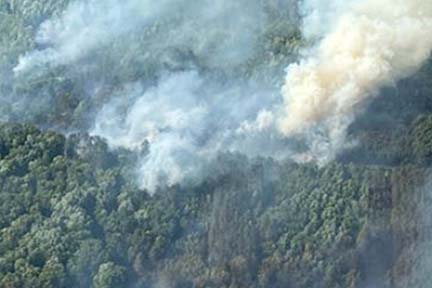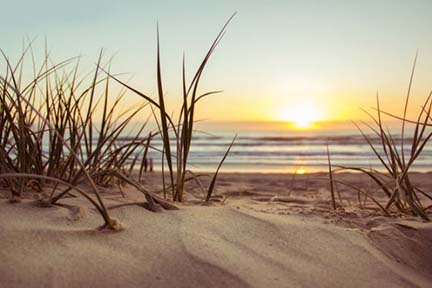
by orionontv | May 21, 2024 | Recreation
|
|
 |
DNR News
|
|
 May 21, 2024 May 21, 2024
Contact: Joe Nohner, 517-599-6825 or Chip Kosloski, 517-281-1705
Over $1.7 million in grants will benefit fish and aquatic systems statewide
The Michigan Department of Natural Resources is awarding more than $1.7 million in Fisheries Habitat Grants for conservation projects on lakes and streams statewide. The funds are matched by more than $950,000 in partner contributions, for a total conservation value of about $2.7 million.
“These grants provide critical funding for projects that yield cleaner water, healthier fish populations and better aquatic habitats – all of which make the outdoors safer and more enjoyable for residents,” said Randy Claramunt, chief of the DNR Fisheries Division. “Our natural resources have always been central to Michigan’s appeal as an outdoor recreation destination, and creative, collaborative projects like these make a lasting, positive impact on those resources.”
The projects will rehabilitate and protect valuable fish habitats that provide the foundation for Michigan’s world-class fisheries. Two of them are DNR Priority Habitat Conservation Projects – those proactively identified by the department as important to sustaining healthy habitats, fisheries and aquatic communities – and another four are projects that directly benefit priorities of Michigan’s Wildlife Action Plan.
The Fisheries Habitat Grant program provides funding for a variety of activities including fish habitat conservation, dam removal and repair, resource assessment studies and access to recreation opportunities such as fishing. Funding from fishing license sales, state of Michigan general funds and a settlement with Consumers Energy is distributed through three grant areas: aquatic habitat conservation, dam management, and aquatic habitat and recreation in the Au Sable, Manistee and Muskegon river watersheds.
Most of the funding is distributed through traditional grants that are funded this year, but the Fisheries Habitat Grant program also provides conditional commitments for funding from future years. These conditional commitments enable partners to leverage future Fisheries Habitat Grant funds in applications for federal and other funding sources, making high-priority and sometimes very expensive projects possible.
Joe Nohner, a resource analyst with the DNR Fisheries Division, said the funded projects will protect and rehabilitate aquatic habitats across the state, while in many cases also improving public safety through the removal of dams.
“These projects are critical to strengthening and maintaining populations of fishes and other aquatic species,” Nohner said. “They will improve fish migration in over 327 miles of Michigan streams and boost public safety through the removal of three dams and seven culverts.”
Supporting work in 12 counties
 This year’s funded projects (and counties where projects are located) include: This year’s funded projects (and counties where projects are located) include:
- City of Battle Creek – Kalamazoo River restoration project (Calhoun County), $325,000.
- City of Kalamazoo – Habitat restoration of Portage Creek at Milham Park (Kalamazoo County), $75,000.
- Conservation Resource Alliance – Boyne Falls Dam removal options analysis (Charlevoix County), conditional commitment for $135,000.
- Conservation Resource Alliance – Manistee River tributaries aquatic organism passage (Wexford County), $150,000.
- Conservation Resource Alliance – N. Cole Creek/24th Street fish passage (Lake County), $100,000.
- Conservation Resource Alliance – Stony Creek restoration, fish passage and Marshville Dam removal implementation (Oceana County), $108,604.
- DNR Fisheries Division – Muskegon walleye rearing pond water intake improvements (Muskegon County), $156,000.
- Duplain Township – Duplain Township Dam removal engineering and design (Clinton County), $225,000. (The snow-covered Elsie Dam is pictured above.)
- J.A. Woollam Foundation – Restoring fish passage on the headwaters of the Fox River (Alger County), $62,264.
- Michigan Trout Unlimited – North Branch Manistee stream restoration and improvement at Flowing Wells (Kalkaska County), $144,800.
- Michigan Trout Unlimited – Riparian wood inventory for opportunistic stream improvement on state land (Crawford and Kalkaska counties), $27,700.
- Trout Unlimited – Restoring habitat and connectivity in the White River watershed (Newaygo County), $250,500.
Fisheries Habitat Grant funding is available annually to local, state, federal and tribal governments and nonprofit groups through an open, competitive process. The next request for proposals is expected to be announced in September.
Learn more about the Fisheries Habitat Grant program and other grant opportunities at Michigan.gov/DNRGrants. |
Note to editors: An accompanying photo is available below for download. Caption/credit information follows.
- Elsie Dam: The failing Elsie Dam in Duplain Township, Clinton County, will be removed using Fisheries Habitat Grant funds, with the goal of reconnecting fish passage on 200 miles of the Maple River. Photo credit: Bruce Levey.
|
|

by orionontv | May 21, 2024 | Environmental
|
Press Release
FOR IMMEDIATE RELEASE: May 21, 2024
CONTACT: Chelsea Wuth, 517-241-2112, [email protected]
MDHHS offers tips to stay healthy during poor air quality days
LANSING, Mich. – As the 2024 North American wildfire season continues and warmer weather increases the risk of higher ozone levels, the Michigan Department of Health and Human Services (MDHHS) is providing Michigan residents steps to take to protect themselves from risks related to poor air quality.
“Last summer, Michigan experienced unique levels of poor air quality due to smoke from neighboring Canadian wildfires,” said Dr. Natasha Bagdasarian, chief medical executive. “This year, in the event that wildfire smoke reaches Michigan again, we urge residents to be proactive in checking the Air Quality Index online regularly to determine if there are any actions they should take. Other than the risk of wildfire smoke, it is still helpful to monitor the Air Quality Index for poor air quality due to other hazards such as ozone.”
The Air Quality Index (AQI), which can be found on the AirNow website, is a color-coded way for residents to see what the levels of some types of air pollution are in their area. Higher AQI values indicate there is a higher concentration of pollutants in the air and a need for Michiganders to take steps to protect their health.
Residents can also sign up for alerts through the EnviroFlash system. This subscriber system allows you to choose the area you would like to get alerts for, and it will send them directly to your email or through a text message.
Before a wildfire smoke event, MDHHS recommends you:
- Familiarize yourself with your forced air HVAC system or your window air conditioning unit. If it has a fresh air intake or outdoor air damper, you will need to close it during a smoke event.
- Ensure you have replacement air filters that are rated MERV-13 or higher.
- Consider purchasing a portable air cleaner. If you do not have one, you can make a do-it-yourself air filter.
- Help neighbors and family members make a plan for possible wildfire smoke.
- If you have asthma or other respiratory illnesses, heart disease, diabetes or another health condition that may make you more sensitive to wildfire smoke, talk to your health care provider ahead of time to make a plan.
- Children under the age of 18, pregnant people, outdoor workers and older people (age 60+) are also more at risk. Talk to your health care provider ahead of time to make a plan.
- Check your local fire risk and read tips from the Michigan Department of Natural Resources for preventing wildfires in Michigan.
During a poor air quality day, take action to protect your health based on the AQI Index. Some recommendations may include:
- Reduce the time you are active outdoors.
- Consider less intense activities that require less physical exertion.
- If ozone levels are unhealthy, schedule outdoor activities for the morning or evening when ozone levels are usually lower.
- In the event of wildfire smoke, avoid activities that create more fine particles indoors, including smoking cigarettes; using gas, propane or wood-burning stoves and furnaces; frying or broiling food; and burning candles or incense.
- In the event of wildfire smoke, create a clean air room. If you can’t stay cool at home, the electricity goes out or too much smoke is still getting in your home, it may be best to seek shelter elsewhere. Call Michigan 211 information on cooling centers.
For additional guidance on protecting your health during poor air quality visit the MDHHS Health and Wildfire webpage. |

by orionontv | May 21, 2024 | Environmental
FOR IMMEDIATE RELEASE
May 21, 2024
Jeff Johnston, EGLE Public Information Officer, [email protected], 517-231-9304
Lauren Detwiler, VVK PR + Creative, [email protected], 248-884-1421
Anne Mitchell, SRLP Manager, [email protected], 517-914-4254
EGLE and Michigan Saves launch Septic Replacement Loan Program
The Michigan Department of Environment, Great Lakes, and Energy (EGLE) has partnered with Michigan Saves, the nation’s first nonprofit green bank, to offer financing for the replacement of failing or near-failing septic systems through the Septic Replacement Loan Program (SRLP). The program provides low-interest financing options for loans up to $50,000 to Michigan homeowners looking to replace their septic systems.
“A working septic system is an essential part of a home,” said Anne Mitchell, Septic Replacement Loan Program Manager at EGLE. “According to a 2024 Bankrate survey, 56% of Americans struggle to cover a $1,000 emergency, so we’re thrilled to offer this financial benefit to anyone facing the daunting task of replacing a failing septic system.”
A failing septic system can back up wastewater into homes, posing serious health risks. Failing septic systems discharge untreated wastewater, posing environmental risks such as the contamination of surface water and drinking water resources. This poses a significant health risk, especially to children who may come into contact with dangerous bacteria and viruses. To address this issue, the SRLP offers affordable loan options to homeowners to help them overcome the unexpected financial burden of septic system replacement.
The Michigan Legislature has allocated $35 million to EGLE’s Onsite Wastewater Management Unit for the development and implementation of the statewide program. EGLE has partnered with Michigan Saves to develop and manage the SRLP. This collaboration ensures that the program adheres to EGLE’s program minimum standards, assuring that supported septic systems are evaluated, designed, and installed to be protective of both public and environmental health.
“Michigan Saves is honored to be selected to manage the Septic Replacement Loan Program in collaboration with our partners at EGLE,” said Chanell Scott Contreras, president and CEO of Michigan Saves. “With the launch of income-qualified loans, we’re ensuring the process of replacing failing septic systems becomes more equitable, providing financial support where it’s needed most and leveling the playing field for all Michigan families.”
The SRLP is divided into two tiers: income-based financing (Tier One) and market-based loans (Tier Two). Loans will range up to $30,000 per project for Tier One and up to $50,000 per project for Tier Two, with rates, terms, and loan amounts varying. To be eligible for the program, septic systems must be permitted by the local health department in accordance with EGLE’s program minimum standards and be installed by a Michigan Saves authorized septic installation contractor.
Through the initiative, EGLE and Michigan Saves aim to protect Michigan’s water resources and safeguard the well-being of its residents. They are committed to ensuring all Michigan homeowners have access to safe and reliable septic systems.
For more information about the SRLP, to find a Michigan Saves authorized contractor, and to begin the financing process for septic system replacement, please visit MichiganSaves.org/Septic/.
To stay up to date on other EGLE news, follow us at Michigan.gov/MIEnvironment. |
|

by orionontv | May 21, 2024 | Recreation
|
|
 |
DNR News
|
|
May 20, 2024
Contact: Andrew LundBorg (Grand Haven State Park supervisor), 616-307-0667 or Pat Whalen (DNR PRD district supervisor), 269-838-1196
Electronic, web-enabled beach warning system takes Grand Haven State Park beach safety to the next level
 Representatives from the Michigan Department of Natural Resources Parks and Recreation Division, SwimSmart and the city of Grand Haven, community members and other stakeholders gathered Monday at a ribbon-cutting at Grand Haven State Park to formally unveil a new electronic beach safety notification system. Representatives from the Michigan Department of Natural Resources Parks and Recreation Division, SwimSmart and the city of Grand Haven, community members and other stakeholders gathered Monday at a ribbon-cutting at Grand Haven State Park to formally unveil a new electronic beach safety notification system.
The new system features 12 electronic and web-enabled towers, demonstrating the DNR’s ongoing commitment to enhancing public safety and emergency response times at this popular state park.
Grand Haven State Park is among the state’s most well-known beach destinations – in fact, earlier this year it was listed in Travel and Leisure’s top 25 beaches in the nation – but it is critical that visitors respect the strong, powerful waters of Lake Michigan and are aware of and prepared for rapidly changing conditions.
“To boost safety at popular Great Lakes state park beaches, SwimSmart towers will help provide real-time warnings to beachgoers,” said Ron Olson, chief of the DNR Parks and Recreation Division. “This innovative, technology-based system features two types of towers visible along the Grand Haven swim beach, marking the first state park location for this initiative.”
Eight orange towers, located on the beach, feature an easy-to-understand electronic light display that mimics the familiar double-red, red, yellow and green flag system visitors are used to seeing on the beach. Additionally, life rings are stationed at each tower. If one of the rings is accessed to aid in helping someone in the water, 911 and park rangers will simultaneously be contacted. The towers can play prerecorded messages to alert users to changing conditions, emergencies and other important information. |
 The four blue light towers, located along the sidewalk, feature a readily accessible emergency phone that park staff and visitors can press to trigger an immediate emergency response. The blue light towers are equipped with a higher-power loudspeaker, video monitoring system and a direct line to the Ottawa County 911 center. The loudspeaker system will work in conjunction with the prerecorded messages of the orange beach towers and allow park staff to broadcast live messages. The four blue light towers, located along the sidewalk, feature a readily accessible emergency phone that park staff and visitors can press to trigger an immediate emergency response. The blue light towers are equipped with a higher-power loudspeaker, video monitoring system and a direct line to the Ottawa County 911 center. The loudspeaker system will work in conjunction with the prerecorded messages of the orange beach towers and allow park staff to broadcast live messages.
The $570,000 project was made possible with a $200,000 grant from the Michigan Economic Development Corporation, and the balance covered through DNR Parks and Recreation capital outlay funds.
The products were invented, developed and installed by Michigan-based SwimSmart, an innovative technology company whose products are created to empower beachgoing families and patrons to make informed decisions when it comes to water recreation.
The DNR will leave the current flagpoles in place but will only fly the flags if the new system goes down due to loss of electricity or other reasons.
“This partnership with the Michigan DNR brings us one step closer to realizing our mission of preventing the next water emergency from happening,” said Jacob Soter, founder and CEO of SwimSmart. “We share the DNR’s commitment to public safety, and are excited to provide this resource to the countless families who will be visiting Grand Haven State Park this summer and for years to come.”
“The safety of our visitors on the Great Lakes is our top priority,” said Pat Whalen, district supervisor for the DNR Parks and Recreation Division. “That’s why we continually evaluate and refine beach safety protocols at state parks throughout the year.”
For example, the DNR introduced double-red warning flags at all state-designated swim beaches along the Great Lakes in Michigan state parks in 2022. When double-red flags are present, beachgoers are not allowed to enter the water from the beach.
Visit Michigan.gov/BeachSafety for tips and information on safely visiting the Great Lakes, including state-designated swim beach locations, the beach flag warning system, Great Lakes currents (and how to escape them) and more.
For more information, contact Andrew LundBorg, park supervisor, at 616-307-0667 and [email protected] or Pat Whalen, PRD district supervisor, at 269-838-1196 or [email protected]. |
Note to editors: Accompanying photos are available below for download. All photos courtesy Michigan Department of Natural Resources.
- SwimSmart demo: Jacob Soter, founder and CEO of SwimSmart, explains how the electronic light displays work on one of the newly installed orange towers at the Grand Haven State Park beach. The LED lights replicate the traditional flag system (double-red, red, yellow and green) for water conditions, and the tower contacts 911 dispatch center in the event of an emergency.
- SwimSmart blue light tower: One of the towers located along the beach sidewalk at Grand Haven State Park. Each tower features two-way communication with a 911 dispatcher, loudspeaker broadcasting and video monitoring for water emergencies and park security.
- Blue light tower – help: The easy-to-use help button and speaker on the blue light towers that staff and the public can use to summon emergency assistance from the Grand Haven State Park beach sidewalk.
- Orange light tower menu: Signage on the orange towers, now installed at the Grand Haven State Park beach, shows each light color with corresponding safety category.
|
|

by orionontv | May 20, 2024 | Feature Writers, High School Sports
Written Sunday May 19th at 10:45 AM
Here is the softball district preview. This will be updated once we get the District 56 matchups.
District 4 at Lapeer
Lapeer vs. Holly
OXFORD vs. Davison
THOUGHTS/PROJECTION: This should be a very interesting district. Oxford and Davison will be very interesting as will Lapeer and Holly in the district semifinals. I think the Wildcats experience moves them on over a very good Bronchos team. PICK: OXFORD.
District 22 at Farmington Hills Mercy
Livonia Stevenson vs. FARMINGTON
SOUTHFIELD ARTS AND TECH vs. Farmington Hills Mercy
THOUGHTS/PROJECTION: Livonia Stevenson and Farmington Hills Mercy should be a very interesting district finals. The Spartans have a very strong team but so does the Marlins. Home field will be the difference here. PICK: FARMINGTON HILLS MERCY.
District 23 at Warren Mott
FERNDALE vs. Warren Mott
OAK PARK vs. Detroit Renaissance
THOUGHTS/PROJECTION: This is not a very strong district when looking at the teams. Warren Mott is a very young team and could get to the district finals. Ferndale is the other team that could make a run. I think Detroit Renaissance wins this district with ease. PICK: DETROIT RENAISSANCE.
District 26 at Waterford Kettering
Waterford Mott vs. Waterford Kettering
Waterford Mott/Waterford Kettering vs. BLOOMFIELD HILLS
WEST BLOOMFIELD vs. CLARKSTON
THOUGHTS/PROJECTION: This is a very interesting district. Clarkston hasn’t been themselves while West Bloomfield has had some moments of good and bad. Bloomfield Hills has also been solid as well. I can’t go against the Wolves in this district even with the changes they made, nope. PICK: CLARKSTON.
District 27 at Seaholm
NORTH FARMINGTON vs. GROVES
SEAHOLM vs. BERKLEY
THOUGHTS/PROJECTION: This is a very interesting district. Berkley looks to be the favorite in this district with a ton of proven experience. Seaholm played in the Red and has home field. The Maples have been looking really strong recently. Groves has been up and down as has North Farmington. Both the Raiders and the Falcons are more than capable of winning this district as Seaholm. I think the Bears find a way and win this very competitive district. PICK: BERKLEY.
District 28 at Avondale
TROY vs. TROY ATHENS
AVONDALE vs. ROYAL OAK
THOUGHTS/PROJECTION: This is a very interesting district. Troy and Troy Athens should be a very interesting district semifinals. I really like what Royal Oak has done. They won a district last season beating Berkley and hopes to continue that same magic. It’s a tougher district this time around but the Ravens get it done for the second time. PICK: ROYAL OAK.
District 29 at Stoney Creek
LAKE ORION vs. ROCHESTER
STONEY CREEK vs. ADAMS
THOUGHTS/PROJECTION: Erin Flynn vs the Dragons looks like it will be inevitable pending if there isn’t any upsets. Stoney Creek is ranked, has one of the State’s best pitchers, and has home field. Lake Orion has been an honorable mention all season. If the Dragons can get to Flynn and force her pitch count to rise that spells trouble for the Cougars. Give me the team that has been there before. PICK: LAKE ORION.
District 56 at Geographic host
HARPER WOODS
Detroit Denby
Detroit Lincoln King
Detroit East English
Detroit Southeastern
Harper Woods Chandler Park
THOUGHTS/PREDICTION: This is not a strong district when looking at the teams. I think Harper Woods wins this district because of the schedule. PICK: HARPER WOODS.








